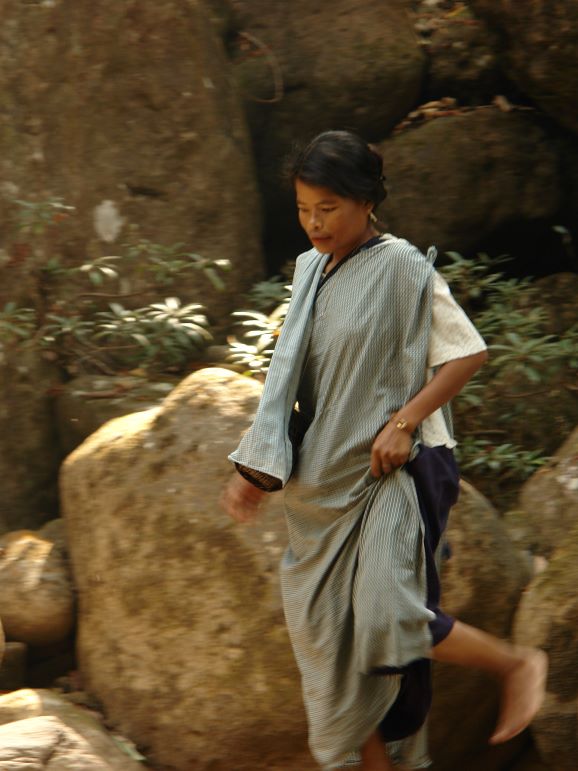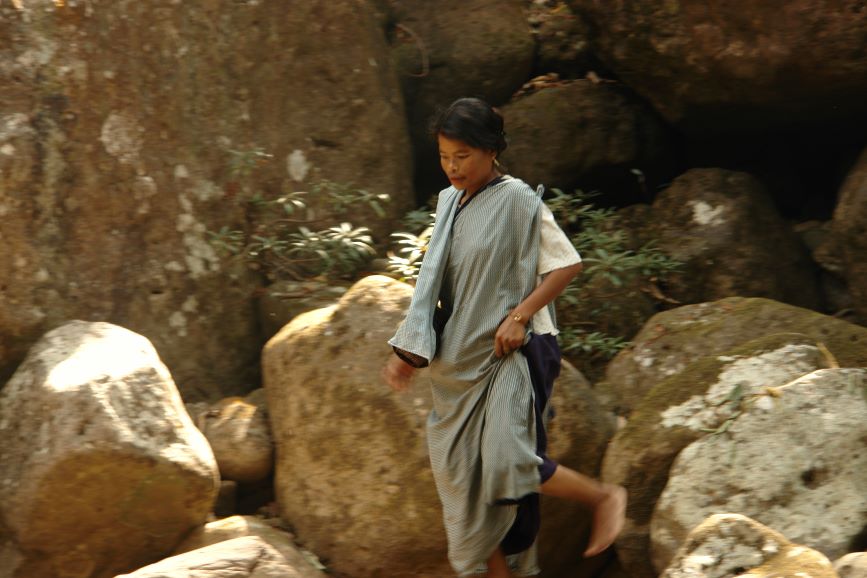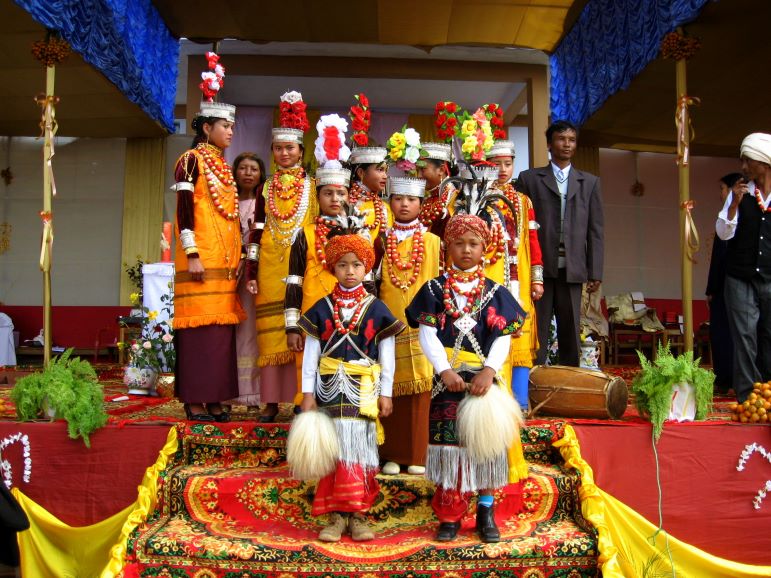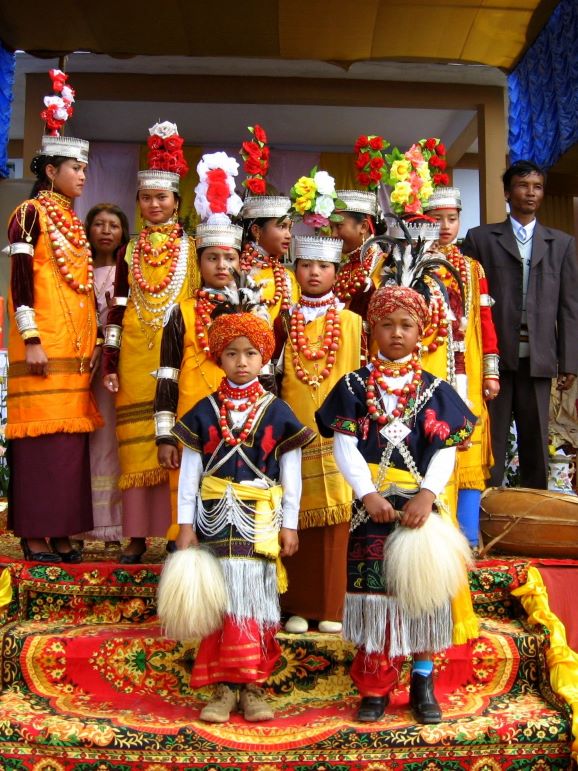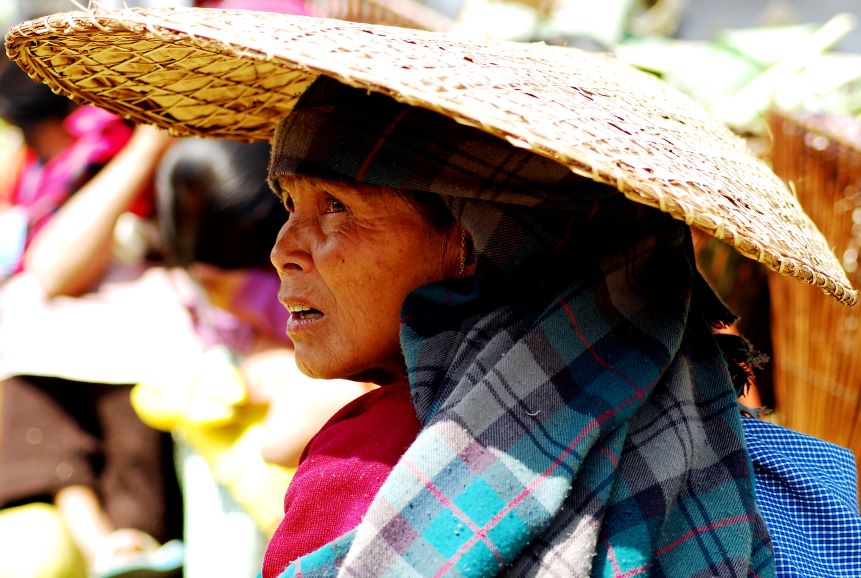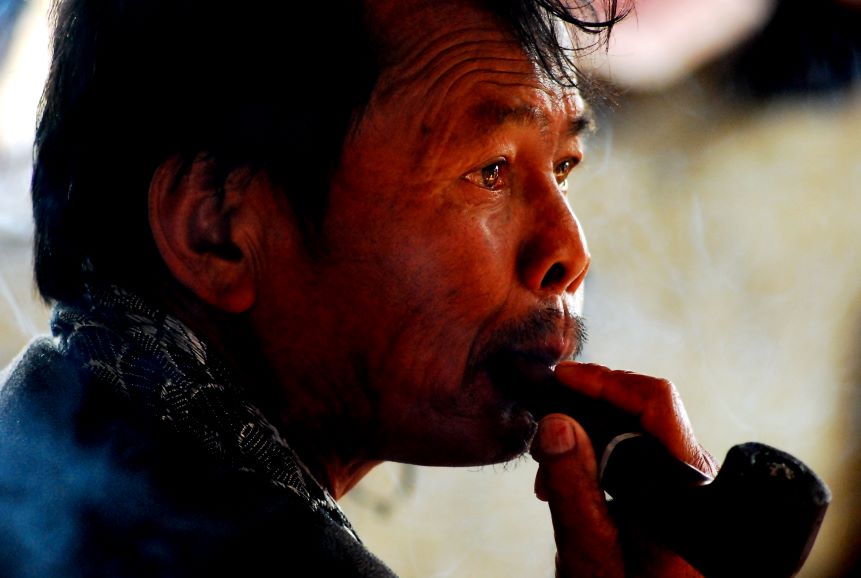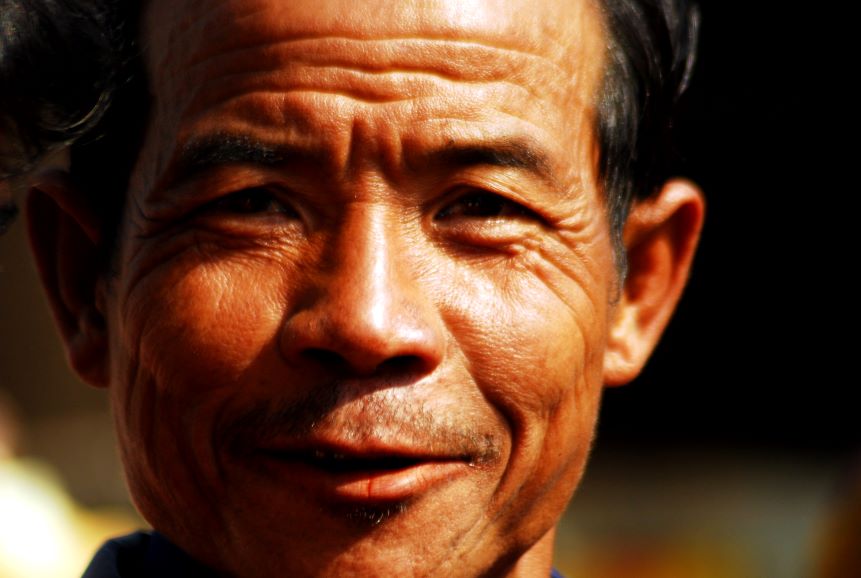The People
The people who inhabit Cherrapunjee and surrounding villages are known as Khasis, The people living in the southern slopes and in the valleys are known as War-Khasis.
A notable feature of the Khasis is the system of matrilineal lineage, where the lineage is taken from the mother’s side. The man goes to live in his wife’s house after marriage. The children take the surname of the mother. The responsibility of looking after the parents in their old age devolves on the youngest daughter. Amidst the Khasis the ancestral property goes to the youngest daughter whereas amidst the War-Khasis it is divided equally among the children.
The Khasis are divided into a number of clans, which trace their descent from ancestress or kiaws. The descendents of one common ancestress are called Shi Kur. A sub-clan is called Shi Kpoh. The smaller division of the clan is the family (iing). Members of clans and sub-clans having a common ancestry cannot marry within the Kur and Kpoh.
The Khasi woman enjoys a much greater share of liberty. The Khasis are fairly free to choose their marriage-partners, a choice, which is motivated by personal preference rather than family considerations. There is no bride price or dowry. Socially women are considered as equal to men. Yet, in the traditional political system, her role was insignificant. Education has wrought great changes over the years. Women are found to be in diverse professions. They dominate markets, and have taken to teaching and nursing. Many hold high posts in government offices, university, and colleges and hold other kinds of jobs.
The traditional system of administration is through the Dorbars – Dorbar Shnong for village level, Dorbar Hima for the Syiemship / Chieftainship level, with elected headman/ Sirdar at the village level and Syiem at the level of Kingdom / Chiefdom / Syiemship. The Khasi society is generally egalitarian but certain families alone may offer its males for the office of Chief (Syiem) in the Khasi States (Hima). There is a hierarchical ranking in the himas with mayors (Basan), nobles (Bakhraws), priests (Lyngdohs), prime ministers (Lyngskors), electing and regulating the activities of the hima, Syiems, Lyngdohs and Sirdars. Certain clans have religious functions like Lyngdohs. In the Dorbar Shnong at village level and the Dorbar Hima at the Kingdom level only men are allowed to participate and vote.
The Khasi himas exist even now as they serve important social and religious functions.
…. Continued after the Menu.





